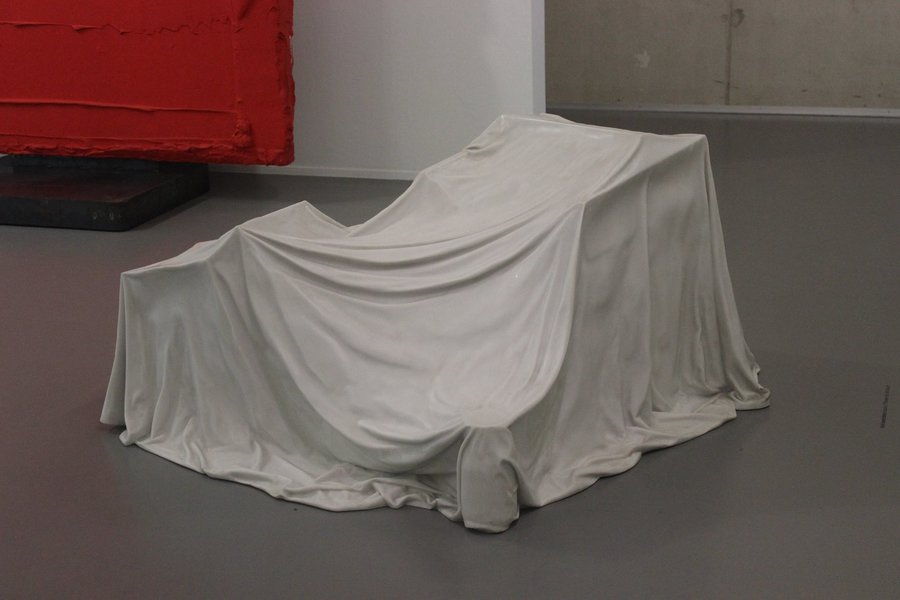Stealing From The Museum/hiddentreasure
Hidden Treasure
Sanne Verkleij
Dionne Wolff
Tim Demper
Thom Trouwborst
Christopher Noort
I is... (ii)(2012)
Ryan Gander - I is… (ii), marble resin, 2013 @Boijmans
I is (iii) is a marble sculpture representing a den / simple shelter made by the artist's 3 year old daughter using a full size Rietveld Cargo chair and smaller Rietveld Crate chair designed for children. In an article for De Groene Amsterdammer Rudi Fuchs accurately notes: (...) Artists retain observations within the framework of their style, which is linked with a particular time. In his daughter's tent Ryan Gander discerned, for instance, angular forms concealed beneath a loose sheet—saw them in such a way that the loose rectangular quality became a motif in his view. To his generation of artists, the minimalist Sol LeWitt was a steady beacon—just as Cézanne was a saint to the Cubists. At the same time, Sol is of course a millstone as well. What Gander then saw, in that childlike construction made by his daughter (and given a title in infant speech) were starkly Cubist forms, like those of LeWitt, that had now been thrown off balance for once. A child's unwitting fun with chairs and a sheet showed that there is, in fact, another side to that organized straightforwardness. This is immediately revealed by his sculpture. Of course he was already aware of that other side before. But if they want to avoid coming across as overly dogmatic, artists will find a narrative motif with which and around which they can express themselves visually.
Source: Rudi Fuchs, Groene Amsterdammer, 25 april 2013.
https://www.artsy.net/artwork/ryan-gander-i-is-dot-dot-dot-iii
Rietveld Cargo chair
- MORE INFORMATION ABOUT RYAN GANDER'S ARTWORK ***
http://www.lissongallery.com/artists/ryan-gander
https://www.artsy.net/art.../ryan-gander-i-is-dot-dot-dot-ii
Ryan Gander wishes to create a dialogue between the viewer and the work, which have references to art history, cinematography and narrative structures. With his objects, installations, texts and films he invites visitors to establish their own connections, to make up their own stories and to generate individual meanings. Gander creates new meanings by bringing together various elements in a variety of combinations at different times within a new context. Gander’s works do not reveal their underlying stories. In a recent interview Gander explained: ‘If you let the spectator discover something on their own terms it holds more significance than it being handed on a plate.’
